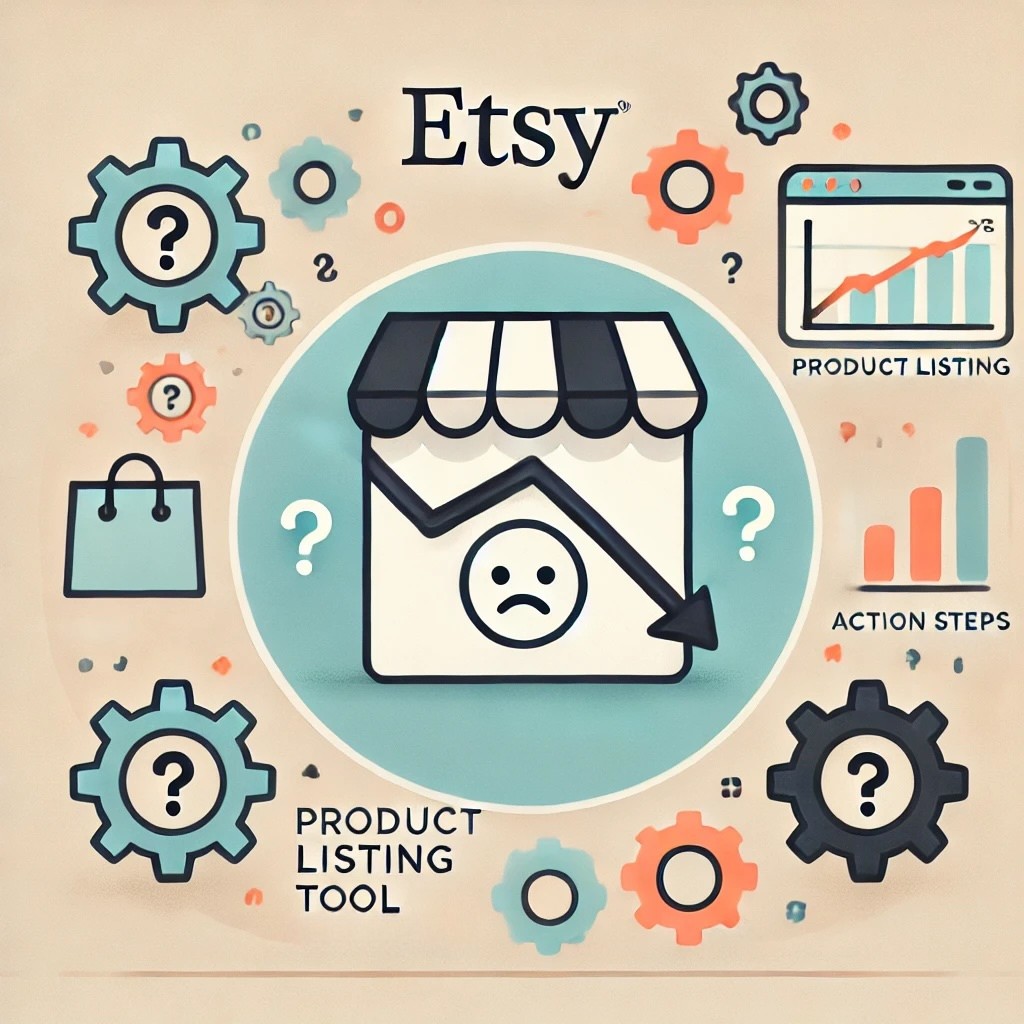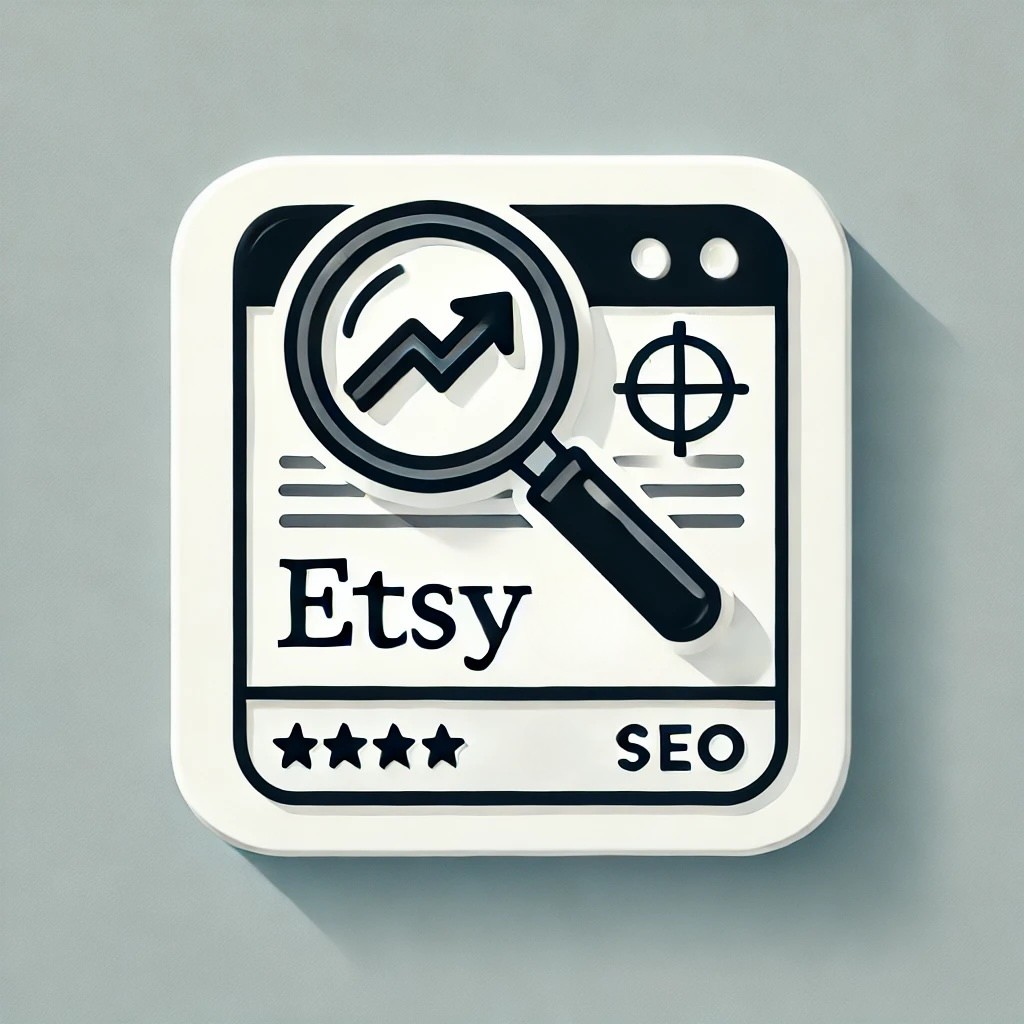
Etsy is a thriving marketplace for both digital and physical products, but selling these two types of items requires a different approach. Whether you’re offering downloadable digital planners or handmade jewelry, it’s essential to create listings that are clear, optimized, and tailored to what your customers need. In this guide, we’ll break down the differences between digital and physical product listings on Etsy, and how you can adapt your titles, descriptions, and photos to ensure customers know exactly what they’re buying.
What’s the Difference Between a Digital Product and a Physical Product on Etsy?
Digital Products
- Definition: Items delivered electronically, such as digital downloads, printables, or design files.
- Examples: Printable wall art, embroidery patterns, planners, SVG files, and eBooks.
- Delivery: Files are automatically available to the buyer after purchase. No shipping or physical handling is required.
Physical Products
- Definition: Tangible items that require shipping to the customer.
- Examples: Handmade jewelry, custom clothing, home decor, and art prints.
- Delivery: Requires shipping logistics, packaging, and tracking.
Key Differences in Listings
1. Titles
For Digital Products:
- Highlight that the product is a digital file to avoid confusion.
- Include keywords like “digital download,” “printable,” or “instant download.”
Example: “Boho Printable Wall Art – Digital Download – Set of 3”
For Physical Products:
- Focus on the tangible nature of the product, including materials and key features.
Example: “Handmade Ceramic Coffee Mug – Boho Style – Dishwasher Safe”
2. Descriptions
For Digital Products:
- Clearly state that the item is a digital download and no physical item will be shipped.
- Explain how the customer will access the files after purchase.
- Include details about file formats, dimensions, resolution, and usage instructions.
Example Description for Digital Product:
“This listing is for a digital download of three boho-inspired wall art prints. No physical product will be shipped. After purchase, you’ll receive high-resolution JPG files that can be printed at home or through a professional print service. Each design comes in 8×10, 11×14, and 16×20 formats. Instructions for printing are included in the download.”
For Physical Products:
- Describe the materials, dimensions, care instructions, and any customizable options.
- Address shipping timelines and packaging to set expectations.
Example Description for Physical Product:
“This listing is for a handmade ceramic coffee mug, perfect for your morning routine. The mug holds 12 ounces and features a boho-style turquoise glaze. Dishwasher and microwave safe. Each piece is hand-thrown, so slight variations may occur. Ships in protective packaging within 3-5 business days.”
3. Product Photos
For Digital Products:
- Use styled mockups to show how the product might look when printed or used.
- Include a visual reminder that the product is a digital file (e.g., text overlay saying “Instant Download”).
- Show examples of the file formats (e.g., “Included: JPG, PNG, PDF”).
Pro Tips:
- Use mockups of frames, devices, or planners to illustrate how the product will look in use.
- Avoid showing real-world objects without clarifying that these are for display purposes only.
For Physical Products:
- Use high-quality photos of the actual item from multiple angles.
- Include close-ups of textures, materials, and details.
- Show the product in a lifestyle setting to help customers visualize its use.
Pro Tips:
- Use consistent lighting and backgrounds to create a professional look.
- Include packaging photos if it’s part of the appeal (e.g., gift-ready wrapping).
4. Tags and Keywords
For Digital Products:
• Include keywords specific to the format and purpose of the product (e.g., “printable planner,” “SVG file,” “digital art”).
• Use terms that buyers searching for downloads might use (e.g., “instant download,” “printable gift”).
For Physical Products:
• Focus on keywords related to the product’s materials, purpose, and audience (e.g., “handmade mug,” “wedding gift,” “boho home decor”).
5. Customer Expectations
For Digital Products:
• Be clear about what the buyer will (and won’t) receive. Some buyers might assume they’re purchasing a physical item, so it’s crucial to emphasize the digital nature in both the title and description.
For Physical Products:
• Set clear expectations around shipping times, returns, and handling. Address common buyer questions upfront in your descriptions.
Best Practices for Clarity
For Digital Products:
- State It Clearly: Repeat in the title, description, and photos that the product is a digital download.
- File Access Instructions: Explain how buyers will download their files and what they’ll receive.
- Customer Support: Offer guidance on how to use the files and what to do if they encounter issues.
For Physical Products:
- Be Descriptive: Include details that help buyers visualize the item, such as size, weight, and materials.
- Set Expectations: Clearly state your shipping policies, including processing times and estimated delivery dates.
- Highlight Customization: If applicable, explain how buyers can personalize their order.
Avoiding Buyer Confusion
For Digital Products: Use disclaimers like “This is a digital file. No physical item will be shipped” in multiple places.
For Physical Products: Be specific about what’s included in the purchase (e.g., if accessories in photos are not part of the sale).
Conclusion
Digital and physical product listings on Etsy require different strategies, but both share a common goal: providing clarity and value to the buyer. By adapting your titles, descriptions, photos, and keywords to suit the type of product you’re selling, you can enhance the customer experience, avoid misunderstandings, and increase your chances of making a sale.
Whether you’re creating a stunning printable or a handmade masterpiece, a well-optimized listing is the key to Etsy success!
Ready to leverage a tool built to optimize your listings? Get started by using the Product Listing Tool here: Product Listing Tool



